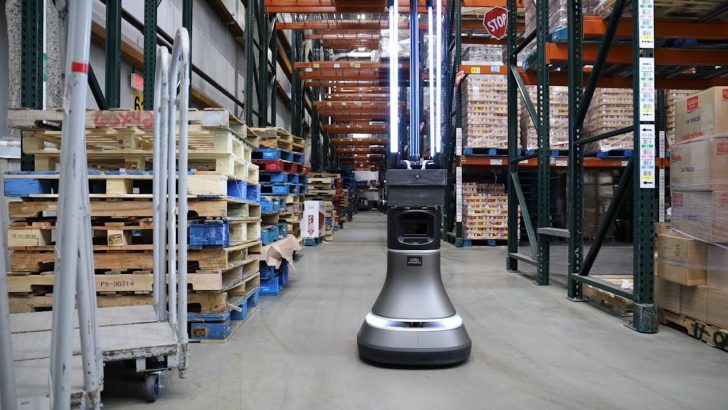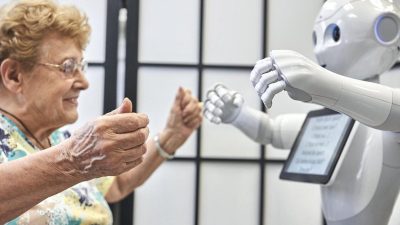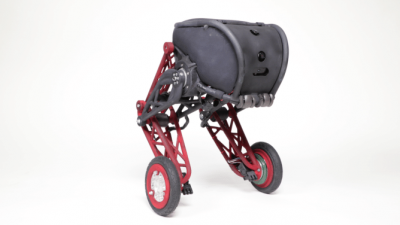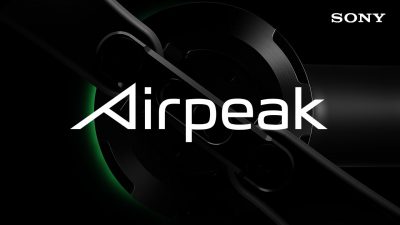UVC robot built by MIT CSAIL disinfects Greater Boston Food Bank

UVC robot built by MIT CSAIL disinfects Greater Boston Food Bank
Essential services such as healthcare and food distribution have been under sustained stress during the novel coronavirus pandemic. A team from the Massachusetts Institute of Technology has teamed up with telepresence provider Ava Robotics Inc. and the Greater Boston Food Bank to design a new disinfection system.
The United Nations projected that the number of people facing severe food insecurity worldwide could double to 265 million because of the pandemic. In the U.S. alone, the five-week total of job losses has risen to 26 million, potentially pushing millions more into food insecurity.
One threat of COVID-19 is that droplets can persist, especially on surfaces. Chemical cleaners can kill the virus, but applying them can be expensive, dangerous, and time consuming. Researchers at MIT’s Computer Science and Artificial Intelligence Laboratory (CSAIL) designed a UVC light fixture that is integrated with Ava Robotics’ mobile robot base to disinfect surfaces and neutralize aerosolized forms of the virus.
“Food banks provide an essential service to our communities, so it is critical to help keep these operations running,” stated Alyssa Pierson, CSAIL research scientist and technical lead of the UVC lamp assembly. “Here, there was a unique opportunity to provide additional disinfecting power to their current workflow and help reduce the risks of COVID-19 exposure.”
Devising an effective UVC robot
Specifically, the robot uses short-wavelength ultraviolet light to kill microorganisms and disrupt their DNA in a process called “ultraviolet germicidal irradiation.”
Ultraviolet light has proven to be effective at killing viruses and bacteria, but it is unsafe for humans to be exposed. The collaborators replaced the telepresence top of Ava’s autonomous robot with the UVC array for disinfecting surfaces.
Typically, this method of ultraviolet germicidal irradiation is used largely in hospitals and medical settings, to sterilize patient rooms, and stop the spread of microorganisms like MRSA and C. diff. The UVC light also works against airborne pathogens. While it’s most effective in the direct line of sight, the light can bounce off of surfaces to reach certain areas, said the MIT researchers.
As far as production went, “in-house manufacturing” took on a whole new meaning for this prototype and the team. The UVC lamps were assembled in Pierson’s basement, and CSAIL Ph.D. student Jonathan Romanishin crafted a makeshift shop in his apartment for the electronics board assembly.
The complete robot system is capable of mapping a space such as the Greater Boston Food Bank’s warehouse and navigating between waypoints and other specified areas.
Mapping, testing UVC robot in the food bank warehouse
First, the team tele-operated the robot to teach it a path around the Greater Boston Food Bank warehouse so that it could then navigate autonomously. The UVC robot can go to human-defined waypoints on its map, such as going to the loading dock, then the warehouse shipping floor, and then returning to base. Users can add new waypoints as needed.
“Our 10-year-old warehouse is a relatively new food-distribution facility with AIB-certified state-of-the-art cleanliness and food safety standards,” said Catherine D’Amato, president and CEO of the Greater Boston Food Bank. “COVID-19 is a new pathogen that GBFB, and the rest of the world, was not designed to handle. We are pleased to have this opportunity to work with MIT CSAIL and Ava Robotics to innovate and advance our sanitation techniques to defeat this menace.”
Within the food bank, the team identified the warehouse shipping floor as a “high-importance area” for the UVC robot to disinfect. Each day, workers stage aisles of products and arrange them for up to 50 pick-ups by partners and distribution trucks the next day. By focusing on the shipping area, the team prioritized disinfecting items leaving the warehouse to reduce the risk of infection in the community.
A unique challenge is that the shipping area is constantly changing, so each night, the robot encounters a slightly new environment. When the UVC robot is deployed, it doesn’t necessarily know which of the staging aisles will be occupied or how full each aisle may be. Therefore, the researchers noted that they needed to teach the robot to differentiate between occupied and unoccupied aisles, so it can change its path accordingly.
The team used a dosimeter, which confirmed that the robot was delivering the expected dosage of UVC light predicted by the model. The robot was able to drive by pallets and storage aisles at roughly 0.22 mph. At this speed, it could cover a 4,000-sq.-ft. space in the warehouse in just half an hour. The UVC dosage delivered during this time can neutralize approximately 90% of coronaviruses on surfaces. For many surfaces, this dose will be higher, resulting in more of the virus neutralized, said the team
“As we drive the robot around the food bank, we are also researching new control policies that will allow the robot to adapt to changes in the environment and ensure all areas receive the proper estimated dosage,” said Pierson. “We are focused on remote operation to minimize human supervision, and therefore, the additional risk of spreading COVID-19, while running our system.”
 Next steps for UVC robot development
Next steps for UVC robot development
For immediate next steps, the team is focused on increasing the capabilities of the UVC robot at the Greater Boston Food Bank, as well as eventually implementing design upgrades. The developers are exploring how to use the robot’s onboard sensors to adapt to changes in the environment, such that in new territory, the robot would adjust its speed to ensure the recommended dosage is applied to new objects and surfaces.
In addition, the MIT researchers are studying how to make these systems more adaptable. For instance, a robot could dynamically change its plan based on estimated UVC dosages and learn to work in new environments, and teams of UVC robots could be coordinated.
“MIT has been a great partner, and when they came to us, the team was eager to start the integration, which took just four weeks to get up and running,” said Ava Robotics CEO Youssef Saleh. “The opportunity for robots to solve workplace challenges is bigger than ever, and collaborating with MIT to make an impact at the food bank has been a great experience.”
Pierson and Romanishin worked alongside Hunter Hansen on software capabilities, Bryan Teague of MIT Lincoln Laboratory, who assisted with the UVC lamp assembly, and Igor Gilitschenski and Xiao Li on future autonomy research. In addition, MIT professors Daniela Rus and Saman Amarasinghe, and Ava leads Marcio Macedo and Youssef Saleh. Ava Robotics provided its platform and team support.
Although the MIT and Ava Robotics researchers are currently focusing on the Greater Boston Food Bank, the algorithms and systems they are developing could be transferred to other use cases in the future. The team said the initial results were encouraging enough that that the approach could be useful for autonomous UV disinfection in other environments, such as factories, warehouses, and restaurants.
“We are excited to see the UVC disinfecting robot support our community in this time of need,” said Rus, director of CSAIL and project lead. “The insights we received from the work at GBFB has highlighted several algorithmic challenges. We plan to tackle these in order to extend the scope of autonomous UV disinfection in complex spaces, including dorms, schools, airplanes, and grocery stores.”
By Rachel Gordon from therobotreport




